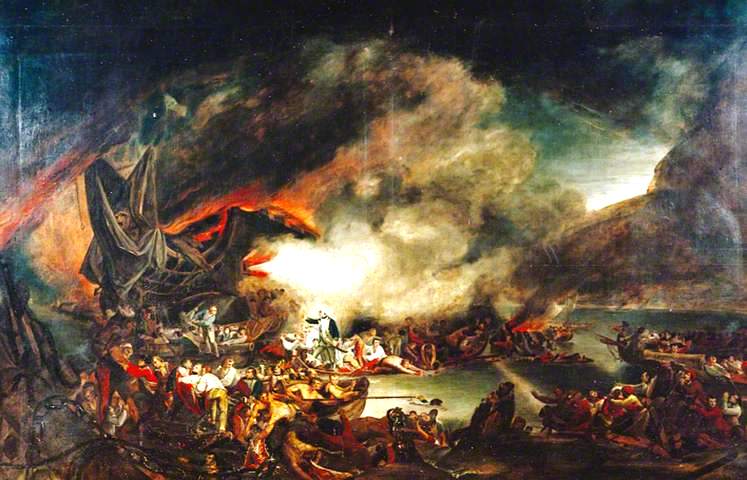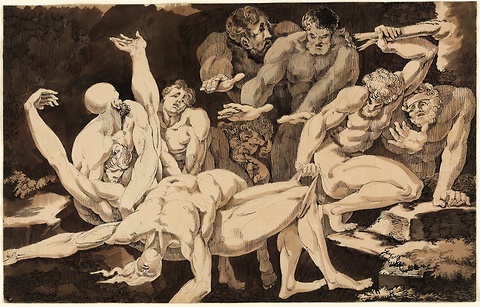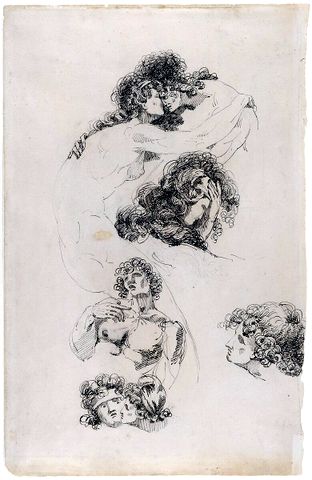JEFFERYS, James
James Jefferys was born at Maidstone, Kent on 19 May 1751 and baptised at All Saints' Church, Maidstone on 28 May 1751, son of William Jefferys (c.1723–1805), a coach-painter & artist, and his wife Parnell née Adderson, who married at St Mary the Virgin, Newington next Sittingbourne, Kent on 20 July 1750. James studied at the free school in Maidstone, being given basic artistic training by his father. About 1771, Jefferys moved to London being apprenticed to engraver William Woollett (1735–1785) and on 14 November 1772 entered the Royal Academy Schools. During the early 1770s he exhibited several subject pictures and drawings, at the Society of Artists of Great Britain and in 1774 won the Royal Academy top prize for a historical painting with his 'Seleus and Stratonice' and a gold palette from the Royal Society of Arts for a drawing 'The Deluge'. In the same year Jefferys was put forward by Sir Joshua Reynolds (1723–1792) for a three-year travel scholarship offered to students of the Royal Academy Schools by the Society of Dilettante when Jefferys, together with artist William Pars (1742-1782), left England in July 1775 for Rome but by 1781 is recorded back in England. Little is known of Jefferys work following his return to London but a group of drawings illustrating the Revd Charles Davy's annotated edition of Chaucer's 'Canterbury Tales' is dated 1781. Davy (1757-1836), amongst other Suffolk livings, was rector of Onehouse, Stowmarket, Suffolk, and the drawings were executed during Jefferys stay there. His only other known work from this later period was a painting, 'The Siege of Gibraltar', exhibited at the Royal Academy in 1783. Jefferys died from a fever, at his lodgings at Meard's Court, Soho, London, on 31 January 1784. His drawings, often violent classical scenes, were rediscovered in the 1970s, many circulated as works by James Barry (1741–1806) or John Hamilton Mortimer (1740-1779), which they closely resemble. Important examples are at Maidstone Museum and Art Gallery, the Victoria and Albert Museum, and the Royal Academy, London. Although highly derivative in style, these are now recognised as exemplary of the violently imaginative mannerism typical of British neo-classicism.
Royal Academy Exhibits
from Mr. Woolet's, Green Street, Leicester Fields
1775 163 The Deluge
164 Zenocrates and Phryne
from No. 5 Mead's Court, Soho
1783 241 The Scene before Gibraltar in the morning of 14th of Sept. 1782, as described in Gen. Elliott's and Brig. Curtis's letter
Works by This Artist

|
The Scene before GibraltarOil on canvas
|

|
Master of the GiantsPen and black ink and brush and reddish-brown wash on cream laid paper
|

|
Studies of Lovers EmbracingPen and carbon black ink, brush and gray wash, graphite
|